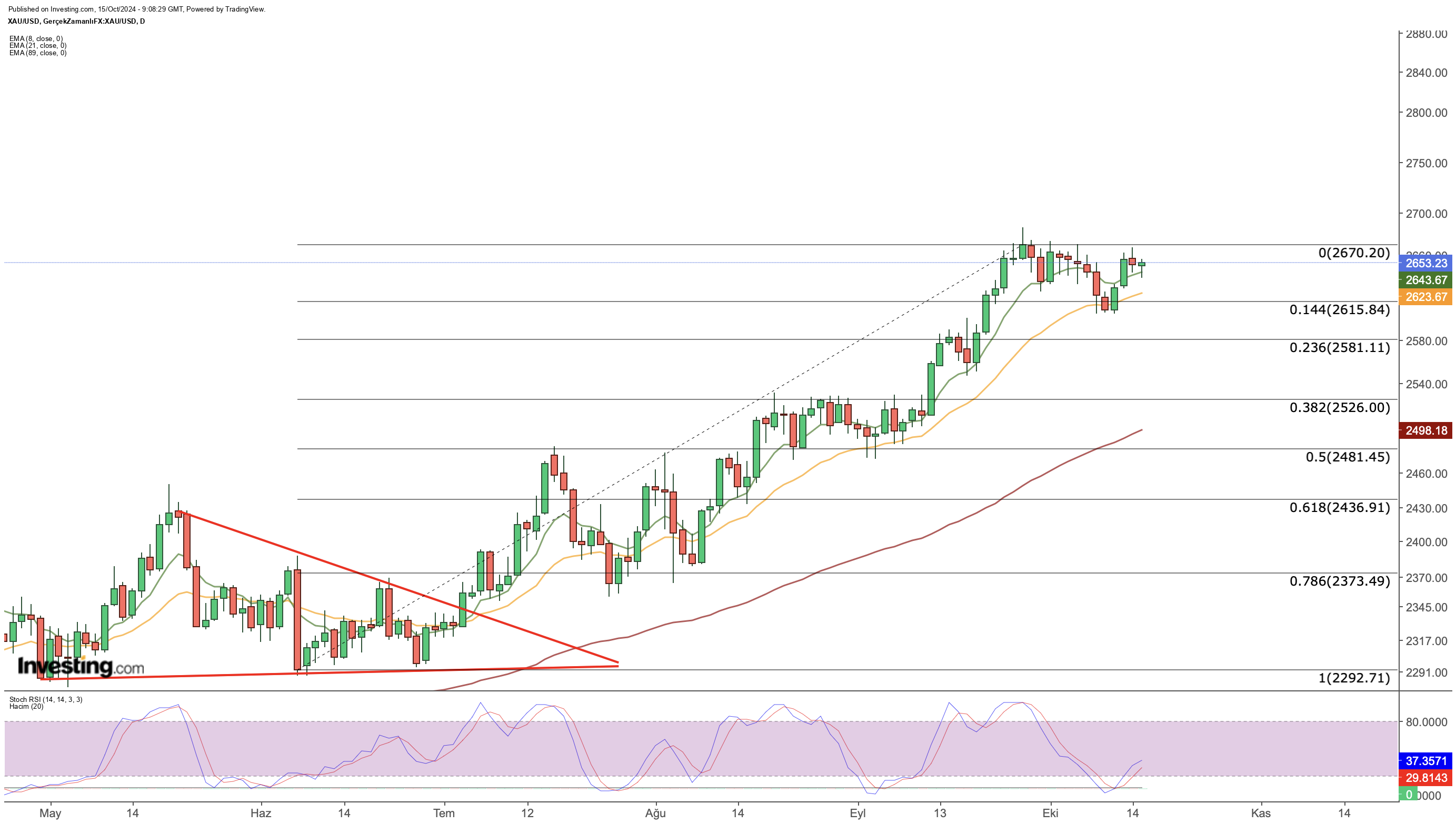Tyson Foods to close major Nebraska beef plant amid cattle shortage - WSJ
- Gold prices have fluctuated recently as geopolitical tensions ease slightly and U.S. economic indicators improve.
- Despite recent dips, gold remains resilient, finding support above the $2,600 mark.
- Traders should watch key support levels closely, as upcoming developments could dictate gold’s next move.
- Looking for actionable trade ideas to navigate the current market volatility? Unlock access to InvestingPro’s AI-selected stock winners for under $9 a month!
As gold steadily navigates recent U.S. economic data and rising global geopolitical risks, the precious metal’s price action remains a focal point.
In September, the yellow metal soared to a peak of $2,685. However, strong U.S. economic indicators and growing expectations that the Federal Reserve will adopt a more cautious approach to interest rate cuts have nudged spot gold prices back toward the $2,600 mark.
Yet, despite these fluctuations, gold's resilience shines through, primarily fueled by heightened geopolitical tensions across the globe, including fresh strains between China and Taiwan that could bolster demand going forward.
Monitoring Geopolitical Risks Is Key
The strength of gold prices hinges largely on global geopolitical dynamics. The escalating tensions between Israel and Iran have driven many investors to seek refuge in gold.
While recent statements suggesting that Israel will refrain from attacking Iran's oil and nuclear facilities have alleviated some market concerns, overall vigilance remains high among investors.
Moreover, China’s military maneuvers near Taiwan are stirring short-term anxiety. With a surge in military aircraft and coast guard vessels deployed to the region, this development presents yet another layer of concern for traders.
U.S. Economic Data Adds Pressure to Gold’s Upward Trajectory
Recent U.S. economic data has caught gold bugs off guard. Just months ago, fears of a recession loomed large, but the latest figures have eased those concerns, raising expectations that the Fed might slow its pace of interest rate cuts.
US dollar yields are projected to stay elevated, which could pressure gold’s upward movement.
However, the upcoming U.S. presidential elections will introduce an element of uncertainty. The unpredictability surrounding the post-election economic landscape acts as a counterbalance to gold prices.
Given these factors, gold continues to find support above the $2,600 range, maintaining a sideways trajectory close to its recent peak.
Technical Outlook for Gold: Key Levels to Watch
After reaching $2,685 on September 26, gold has encountered headwinds from expectations of a slowdown in Fed interest rate cuts and Israel's restrained military response in the Middle East.
Despite this pressure, declines in gold prices are finding support around $2,620, aligning with the Fibonacci 0.144 retracement of the last upward trend.

If this support level holds, gold could surge toward $2,730 in the coming days, especially if geopolitical tensions escalate. Should those concerns intensify, a medium-term target of $2,820 could come into play.
Conversely, if global markets experience a calmer environment, traders will closely monitor the $2,620 support. A weekly close below this level may signal a correction, with potential drops to $2,580 and then $2,520.
***
Disclaimer: This article is written for informational purposes only. It is not intended to encourage the purchase of assets in any way, nor does it constitute a solicitation, offer, recommendation or suggestion to invest. I would like to remind you that all assets are evaluated from multiple perspectives and are highly risky, so any investment decision and the associated risk rests with the investor. We also do not provide any investment advisory services.
